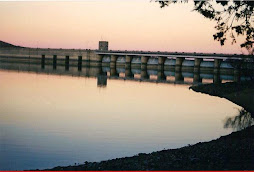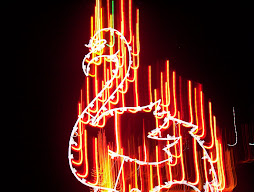From National Geographic. Excerpts:
Some of the volcanic bluestones in the inner ring of Stonehenge officially match an outcrop in Wales that's 160 miles (257 kilometers) from the world-famous site, geologists announced this week.
The discovery leaves two big ideas standing about how the massive pieces of the monument arrived at Salisbury Plain: entirely by human hand, or partly by glacier.
..
The origin of the bluestones, however, has weighed heavy on the hearts of archaeologists. Rocks resembling the material under a microscope haven't been found anywhere relatively near Stonehenge—at least until now.
Pinpointing the stones' origins is crucial to understanding how so many heavy hunks of rock made their way to the open plain where Stonehenge now stands.
"There's no way of explaining how these stones were transported without knowing where they came from," said study co-author Robert Ixer of the University of Leicester in the U.K.
..
As late as two years ago, the pair thought the blocks couldn't have come from the country—no samples from Welsh outcrops matched the Stonehenge blocks.
..
The very first one—a chunk of rock collected in Wales 20 years ago—was a perfect match to the Stonehenge bluestones. The geologists spent the next two years checking a piece of Stonehenge bluestone against other outcrops around Wales.
..
The rocky outcrop fingered by the duo's analysis is called Craig Rhos-y-Felin, which is now located on private land near a sheep farm.
The site is a long, bush-covered set of crags the size of four double-decker buses.
And:
The new find leaves two prominent theories for how the Welsh rocks got to Salisbury.
Humans could have quarried the site and dragged the blocks on wooden rafts. Or a giant glacier may have chiseled off the blocks and ferried them about a hundred miles (160 kilometers) toward Stonehenge, with humans dragging them the rest of the way.
Or..
Some of the volcanic bluestones in the inner ring of Stonehenge officially match an outcrop in Wales that's 160 miles (257 kilometers) from the world-famous site, geologists announced this week.
The discovery leaves two big ideas standing about how the massive pieces of the monument arrived at Salisbury Plain: entirely by human hand, or partly by glacier.
..
The origin of the bluestones, however, has weighed heavy on the hearts of archaeologists. Rocks resembling the material under a microscope haven't been found anywhere relatively near Stonehenge—at least until now.
Pinpointing the stones' origins is crucial to understanding how so many heavy hunks of rock made their way to the open plain where Stonehenge now stands.
"There's no way of explaining how these stones were transported without knowing where they came from," said study co-author Robert Ixer of the University of Leicester in the U.K.
..
As late as two years ago, the pair thought the blocks couldn't have come from the country—no samples from Welsh outcrops matched the Stonehenge blocks.
..
The very first one—a chunk of rock collected in Wales 20 years ago—was a perfect match to the Stonehenge bluestones. The geologists spent the next two years checking a piece of Stonehenge bluestone against other outcrops around Wales.
..
The rocky outcrop fingered by the duo's analysis is called Craig Rhos-y-Felin, which is now located on private land near a sheep farm.
The site is a long, bush-covered set of crags the size of four double-decker buses.
And:
The new find leaves two prominent theories for how the Welsh rocks got to Salisbury.
Humans could have quarried the site and dragged the blocks on wooden rafts. Or a giant glacier may have chiseled off the blocks and ferried them about a hundred miles (160 kilometers) toward Stonehenge, with humans dragging them the rest of the way.
Or..








































































































